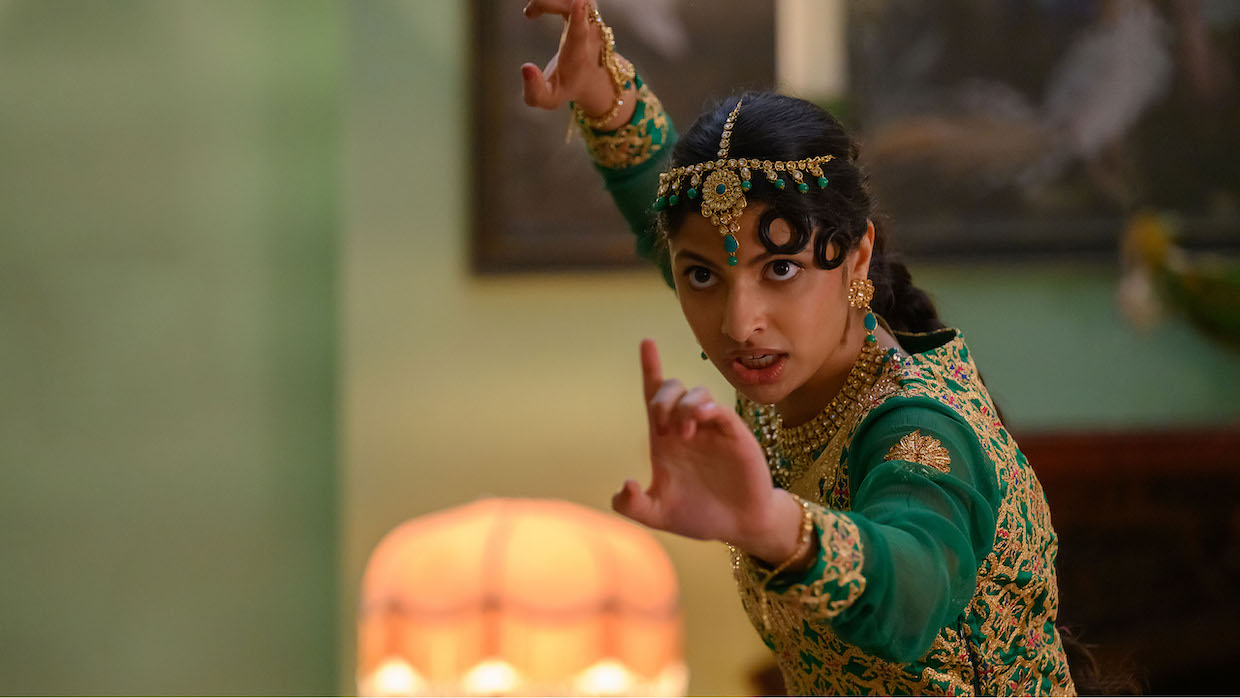 Back to selection
Back to selection
“Even the Biggest Fight Scene Was Ultimately About Character”: Editor Robbie Morrison on Polite Society
 Polite Society, courtesy of Sundance Institute.
Polite Society, courtesy of Sundance Institute. When Ria’s (Priya Kansara) big sister Lena (Ritu Arya) announces that she’s dropping out of art school and getting married, she immediately knows that something’s not right. As such, the London schoolgirl and aspiring martial artist recruits a couple of friends to save Lena from her own wedding before she moves to Singapore with her new beau.
Robbie Morrison tells Filmmaker about cutting Polite Society, writer-director Nida Manzoor’s debut feature.
See all responses to our annual Sundance editor interviews here.
Filmmaker: How and why did you wind up being the editor of your film? What were the factors and attributes that led to your being hired for this job?
Morrison: I was lucky enough to have an existing relationship with the amazing director, Nida Manzoor, having previously worked together on her breakout television show, We Are Lady Parts, from pilot to the full series. That show and the film, Polite Society, share a similar DNA and thankfully she was keen to have me onboard! Having that established shorthand and trust allowed us to be on the same page from day one.
Filmmaker: In terms of advancing your film from its earliest assembly to your final cut, what were goals as an editor? What elements of the film did you want to enhance, or preserve, or tease out or totally reshape?
Morrison: The earliest assembly was running quite long so the first goal was just cutting down to a reasonable length. We knew we were destined to be a pacy, tight film so that was always in the back of our minds — every scene had to earn its place, which hurts when you’re cutting great material out, but ultimately it benefits the final film (still miss that badass slo-mo walking sequence though…) The biggest element we worked on was probably keeping the relationships in the film as strong as possible — the bond between the two sisters was key, so making that believable quickly was hugely important. With that emotional core as our foundation we could then let loose on the comedy and action of which there was a lot to fit in!
Filmmaker: How did you achieve these goals? What types of editing techniques, or processes, or feedback screenings allowed this work to occur?
Morrison: We previewed three times with audiences which was actually a great experience. We did two UK based screenings and one in the USA and the feedback was really useful. As ever it’s more about being in the room, feeling the audience react than the questionnaires that get filled in (though these are helpful too). Being a British, London-based comedy and getting a fantastic reaction from an LA audience was an amazing feeling.
Filmmaker: As an editor, how did you come up in the business, and what influences have affected your work?
Morrison: I started doing film at art college, then went to the National Film and Television School in the UK where I specialised in editing. After that it was the usual journey of short films, friends projects and slowly building up better credits.
Filmmaker: What editing system did you use, and why?
Morrison: We edited on Avid for this film — it’s something I’ve used from my early days at art college right up to the present so the familiarity is helpful, and when you are working with a team of assistants, VFX editors, music editors etc the ability to work together and share material easily is crucial.
Filmmaker: What was the most difficult scene to cut and why? And how did you do it?
Morrison: The trickiest scene was probably our first fight scene. This is where the tone of the film is set, we aren’t just a comedy set amongst school friends anymore, we’re throwing mad action sequences at people and laying down the rules of the world — characters are fighting, flying through the air and getting back up for more like it’s an everyday occurrence. This scene went through a lot of versions, trying different start points, different stunts, and a host of music cues. I think we cracked it when we moved it a few scenes later than originally written; giving us maybe only five more minutes to live with our main character before we flipped the switch was transformative, and we could then finesse the actual fight. We had to trim a lot of great stunt work but the final length of the scene was right for where we were in the story.
Filmmaker: Finally, now that the process is over, what new meanings has the film taken on for you? What did you discover in the footage that you might not have seen initially, and how does your final understanding of the film differ from the understanding that you began with?
Morrison: You learn so much over the course of cutting a film — but the biggest takeaway is that even the biggest fight scene was ultimately about character. Creating a moment near the end of the film where our two leads briefly make eye contact in the middle of a massive brawl was electric because of everything we had built before.
